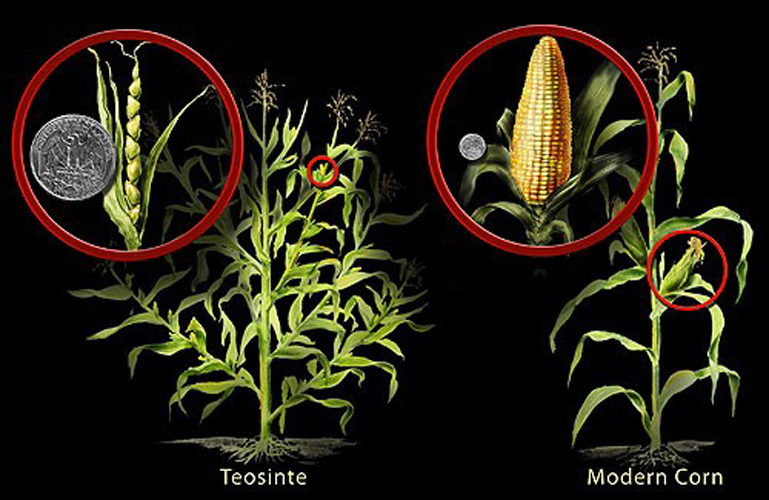Plant domestication: Crop genetic improvement

Recently, during my ACES 399 seminar, Dr. Sarah Refi Hind, assistant professor in the Department of Crop Sciences, discussed the topic of crop genetic improvement. Dr. Hind examines how the plant immune system detects pathogenic bacteria that cause disease on tomato and other vegetable crops. Her research contributes to the understanding of plant-microbe interactions and aids in the development of plants with enhanced resistance to infection. She discussed the topic of how the processes and technologies related to crop genetic improvement have changed over time, as well as perspectives about the future of food production.
Humans have been breeding plants since before recorded human history and have domesticated many of the plants that we rely on in our daily lives today. Domestication refers to the adaptation of a plant or animal from a natural state to live in close association with humans. The scientific definition, however, is a unique coevolutionary, mutualistic relationship between domesticator and domesticate. One of the most dramatic examples of domestication is that of our modern-day corn, or maize, from teosinte. Through domestication, people now have a range of plants that are all genetically related yet possess distinct morphological qualities in size, shape, and color. Domesticated plants have uninformative, predictive, and high productive characteristics.
Crop breeding started with phenotypic selection; however, this process could not keep up with human population growth. Thus, the development of new breeding technologies was required. Hybrid plants were developed by crop breeders, and it was found that they have resistance to diseases, higher yields, and display other beneficial traits when compared to their parents. Together, the yield gains resulting from the development of hybrid, dwarfed plants and technological advances saved the lives of millions of people who would have died due to starvation. However, the yields obtained using these hybrid lines have stagnated.
As advances in the fields of molecular biology, genetics, and genomics were incorporated into breeding programs, the mass production of crops were able to feed more people. However, the food deficit has decreased by only about 50%. A shortage of crops still exists because human population levels are expected to continue rising, and global climate changes could negatively affect the production system. Thus, there is still a need to improve crop breeding to meet the growing demand for food. Genome edition is expected to integrate into developing new breeding strategies. This technique would allow scientists to edit specific genes within the genome of a target organism. One of the limiting factors is that genetic diversity can be lost during the process of domestication.
Students in ACES 399: “Vision 2050 –Grand Challenges of the Millenium” attend presentations by ACES faculty members about current topics in agriculture. As part of their class assignments, students are asked to write blog posts reflecting on those topics. The Voices of ACES blog will feature select ACES 399 blog posts throughout the semester.